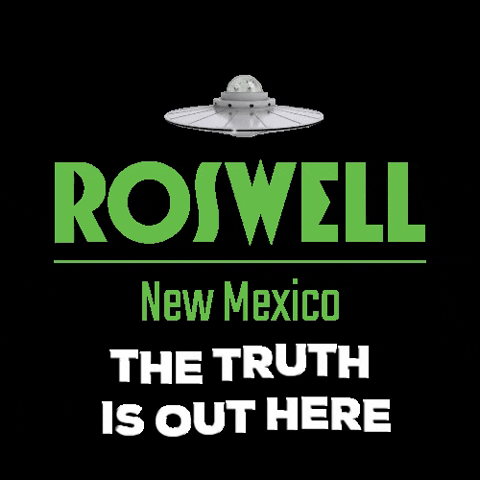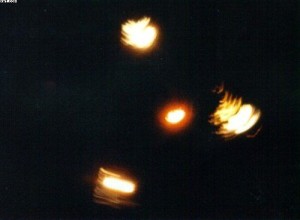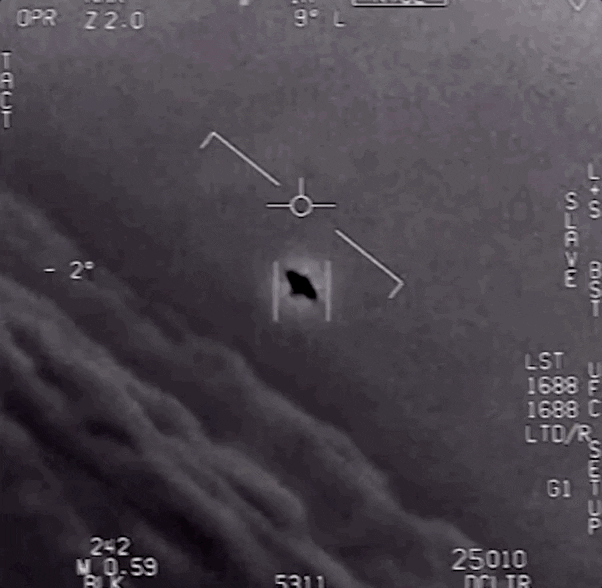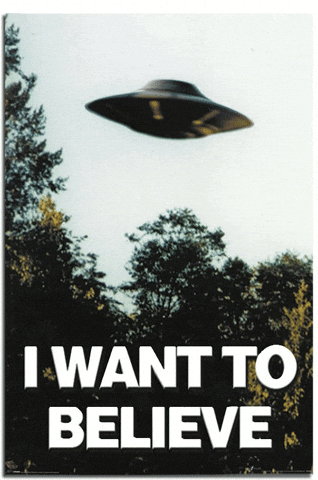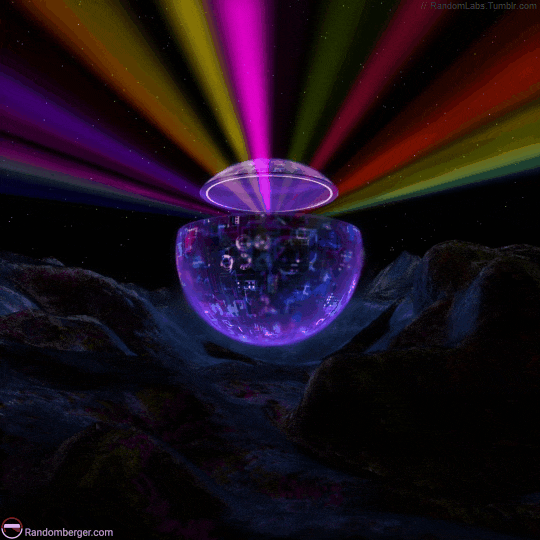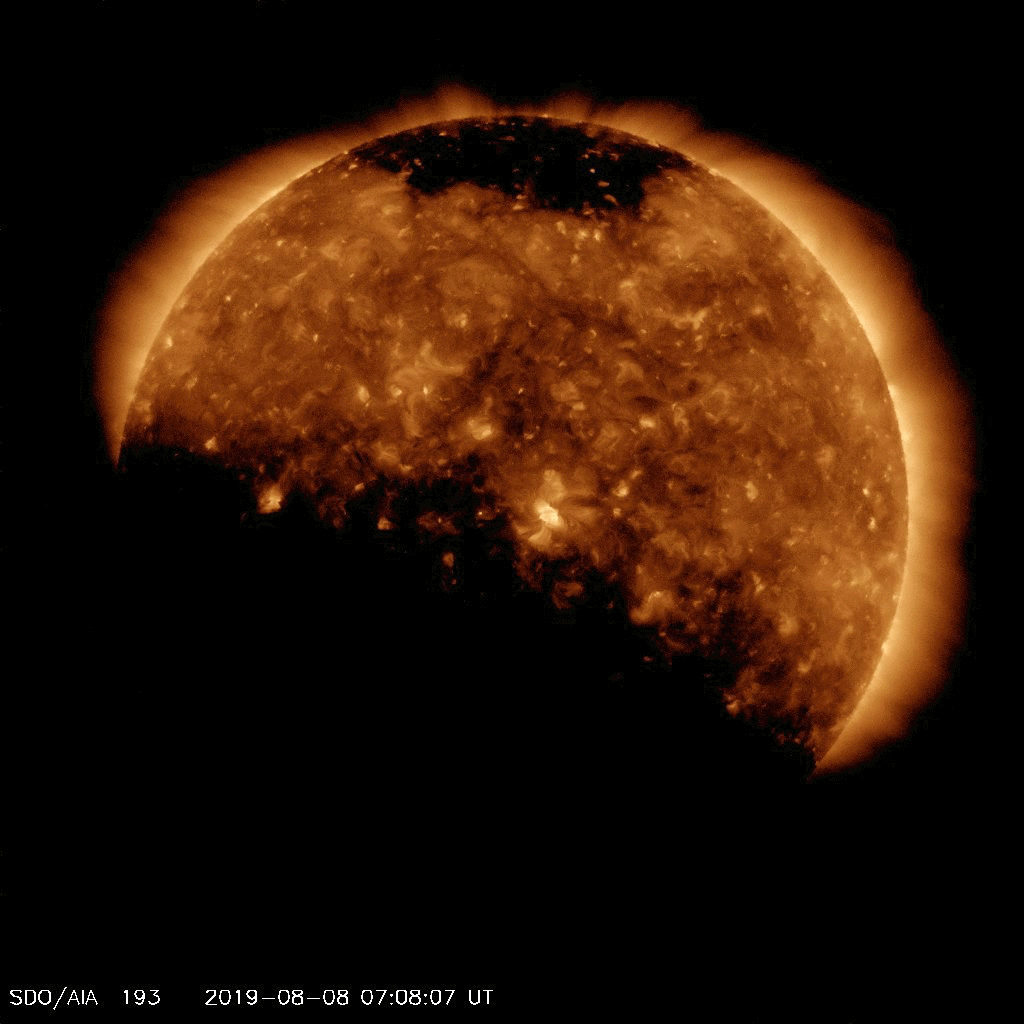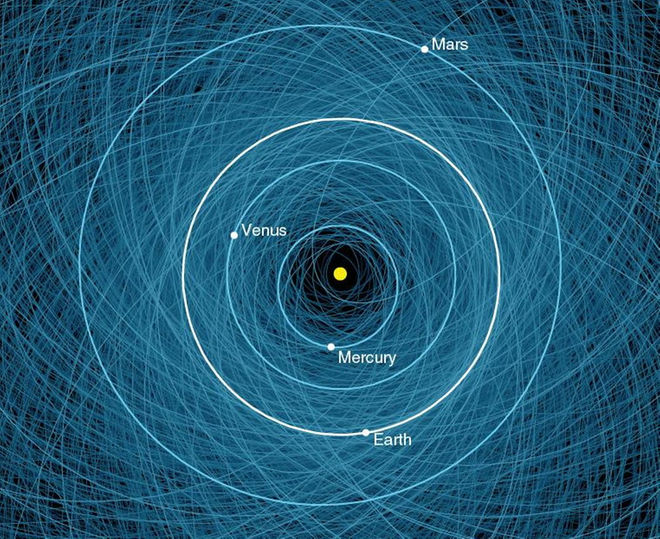Earth is hit every day by small bits of space dust. Slightly larger chunks burn up colorfully in the atmosphere, causing the shooting stars you see in the sky. Occasionally even bigger rocks hit our atmosphere; they are known as fireballs, because the light from them burning up is particularly bright. These tend to smack the Earth a few times a year and may produce a few fragments for rock-hunters to find.
NASA and other organizations do regular scans of the sky to catalog any small bodies that are at risk of crashing into our planet. No imminently threatening bodies have been found yet, but it's clear that sooner or later Earth will be struck by something big. The organizations are actively researching the best ways to protect Earth from asteroids, meteoroids or comets that may come crashing down
Asteroids refer principally to small, rocky bodies. Comets contain more ice and can also pose a threat to Earth. Before fragments enter our atmosphere, they are known as meteroids. During their path in the atmosphere, they are called meteors. If any of these pieces reach the ground, those pieces are called meteorites. The best hunting ground on Earth for meteorites is Antarctica because the ice makes it so easy to see the fragments, and the ground is not disturbed as much as a typical urban area or forest.
The difference between a meteroid and an asteroid is a little vague. In 1961, The International Astronomical Union (the official body for naming objects in space) said a meteroid is much smaller than an asteroid, but bigger than an atom. A 2010 Meteoritics and Planetary Science paper led by Alan Rubin, a geophysicist at the University of California, Los Angeles, suggested that the limit for meteoroids be about 1 meter in size.
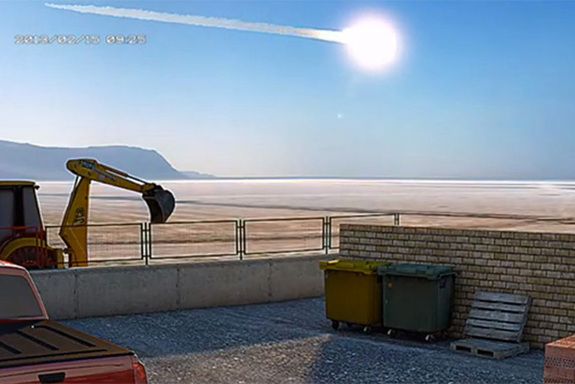
Characterizing the threat
It is clear that even small bodies can pose a threat; the asteroid that broke up over Chelyabinsk, Russia, in 2013 was roughly 56 feet (17 meters) across, shattering glass and injuring hundreds of people. In 1908, an estimated 130-foot (40-meter) object exploded over Siberia and flattened trees over 825 square miles (2,137 square kilometers). Around 50,000 years ago, before human civilization began, a rock about 150 feet wide (46 meters) smacked into what is now called Arizona. It left behind Meteor Crater, which is roughly 0.7 miles (1.2 kilometers) wide today.
Even bigger collisions happened far in the past. The dinosaurs were wiped out 66 million years ago by an object about 6 miles (10 km) wide, which left behind a 110-mile (180 km) crater in Mexico known as Chicxulub. But that's nothing compared to evidence of another impactor found in 2014. A rock formation in our planet's crust pointed to a possible impactor 23 to 36 miles (37 to 58 kilometers) across that smacked into Earth 3.26 billion years ago, just a few million years after life evolved.
NASA began tracking near-Earth objects (NEOs) in the 1970s. Its goal is to find objects that are at least tens of meters in size, “which could cause significant harm to populated areas on the Earth if they were to strike without warning,” NASA stated in 2014.
Congress directed NASA in 1994 to find at least 90 percent of potentially hazardous NEOs larger than 0.62 miles (1 kilometer) in diameter, which NASA fulfilled in 2010. Congress also asked NASA in 2005 to find at least 90 percent of potentially hazardous NEOs that are 460 feet (140 meters) in size or larger. That's supposed to be finished by 2020. NASA created a Planetary Defense Coordination Office in 2014 — a year after Chelyabinsk — to better coordinate its efforts, in response to an Office of the Inspector General report. Other space agencies such as the European Space Agency also have their own offices, and the different nations regularly collaborate with each other.
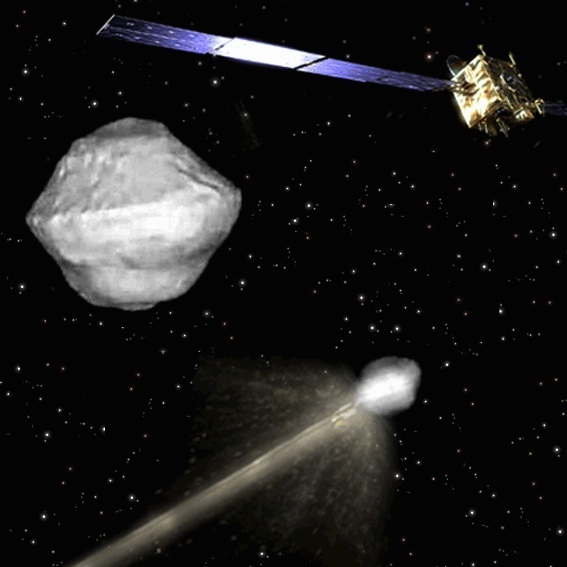
Scanning the sky
NASA works with several sky surveys to maintain a list of potentially hazardous objects. These include the Catalina Sky Survey (University of Arizona), Pan-STARRS (University of Hawaii), Lincoln Near-Earth Asteroid Research or LINEAR (Massachussetts Institute of Technology) and Spacewatch (University of Arizona). These observatories are constantly upgrading their capabilities to try to catch fainter asteroids.
Asteroids are also observed from space by several telescopes, but the one most regularly used for NEO searches is called NEOWISE. It's the new mission of the Wide-field Infrared Survey Explorer (WISE) telescope, which launched in 2009 and was revived from hibernation in 2013 to search for asteroids. The telescope is expected to keep operating until 2017, when the angle from the sun in its orbit will be too bright to search for asteroids. A follow-up mission called Near Earth Object Camera (NEOCam) has been proposed for 2021, but is competing against five other missions for funding. Mission selection will be announced in September 2016.
There are other NASA missions that are looking to get up close to asteroids to better characterize their composition. Some recent examples: The Dawn mission visited asteroid Vesta between 2011 and 2012, and has now been at Ceres (a dwarf planet) since 2015. OSIRIS-REx (Origins, Spectral Interpretation, Resource Identification, Security, Regolith Explorer) is expected to depart for asteroid Bennu in 2018 for a sample-return mission, which will come back to Earth in 2023. Additionally, NASA uses data available from other space agency missions that visited asteroids, such as the Japanese Hayabusa (completed) and Hayabusa 2 (in progress).
Some planned missions will take even more daring steps at asteroids. NASA has been working on concepts for an Asteroid Redirect Mission (ARM) that would have a robot move a small body into the moon's orbit, for astronauts to study. Also: NASA, the European Space Agency and other partners are planning a mission called AIDA, or Asteroid Impact and Deflection Assessment. The goal is to change the path of a small moon orbiting the asteroid Didymos using a kinetic impactor.
A kinetic impactor (perhaps with a nuclear bomb inside) would deflect the orbit, tugging the asteroid slowly using a spacecraft, redirecting it with solar heat, or blasting it with a laser. That is just one idea. There is ongoing research as to what sort of asteroid deflection technique would be best. The best approach depends on many factors, such as cost, the composition of the asteroid, time to impact and technology maturity. Studies are ongoing in these fields; in 2007, NASA said that non-nuclear kinetic impactors had the most mature technology.



